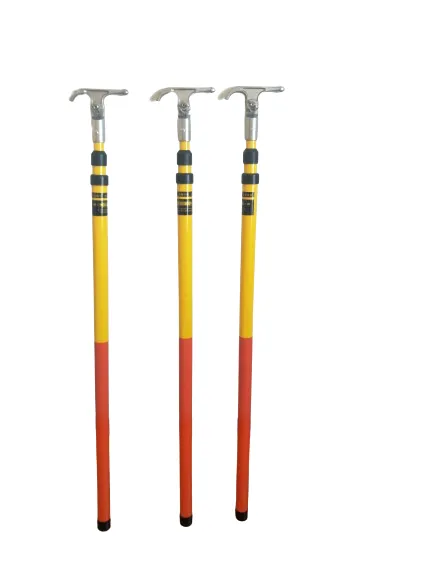
-
 Afrikaans
Afrikaans -
 Albanian
Albanian -
 Amharic
Amharic -
 Arabic
Arabic -
 Armenian
Armenian -
 Azerbaijani
Azerbaijani -
 Basque
Basque -
 Belarusian
Belarusian -
 Bengali
Bengali -
 Bosnian
Bosnian -
 Bulgarian
Bulgarian -
 Catalan
Catalan -
 Cebuano
Cebuano -
 Corsican
Corsican -
 Croatian
Croatian -
 Czech
Czech -
 Danish
Danish -
 Dutch
Dutch -
 English
English -
 Esperanto
Esperanto -
 Estonian
Estonian -
 Finnish
Finnish -
 French
French -
 Frisian
Frisian -
 Galician
Galician -
 Georgian
Georgian -
 German
German -
 Greek
Greek -
 Gujarati
Gujarati -
 Haitian Creole
Haitian Creole -
 hausa
hausa -
 hawaiian
hawaiian -
 Hebrew
Hebrew -
 Hindi
Hindi -
 Miao
Miao -
 Hungarian
Hungarian -
 Icelandic
Icelandic -
 igbo
igbo -
 Indonesian
Indonesian -
 irish
irish -
 Italian
Italian -
 Japanese
Japanese -
 Javanese
Javanese -
 Kannada
Kannada -
 kazakh
kazakh -
 Khmer
Khmer -
 Rwandese
Rwandese -
 Korean
Korean -
 Kurdish
Kurdish -
 Kyrgyz
Kyrgyz -
 Lao
Lao -
 Latin
Latin -
 Latvian
Latvian -
 Lithuanian
Lithuanian -
 Luxembourgish
Luxembourgish -
 Macedonian
Macedonian -
 Malgashi
Malgashi -
 Malay
Malay -
 Malayalam
Malayalam -
 Maltese
Maltese -
 Maori
Maori -
 Marathi
Marathi -
 Mongolian
Mongolian -
 Myanmar
Myanmar -
 Nepali
Nepali -
 Norwegian
Norwegian -
 Norwegian
Norwegian -
 Occitan
Occitan -
 Pashto
Pashto -
 Persian
Persian -
 Polish
Polish -
 Portuguese
Portuguese -
 Punjabi
Punjabi -
 Romanian
Romanian -
 Russian
Russian -
 Samoan
Samoan -
 Scottish Gaelic
Scottish Gaelic -
 Serbian
Serbian -
 Sesotho
Sesotho -
 Shona
Shona -
 Sindhi
Sindhi -
 Sinhala
Sinhala -
 Slovak
Slovak -
 Slovenian
Slovenian -
 Somali
Somali -
 Spanish
Spanish -
 Sundanese
Sundanese -
 Swahili
Swahili -
 Swedish
Swedish -
 Tagalog
Tagalog -
 Tajik
Tajik -
 Tamil
Tamil -
 Tatar
Tatar -
 Telugu
Telugu -
 Thai
Thai -
 Turkish
Turkish -
 Turkmen
Turkmen -
 Ukrainian
Ukrainian -
 Urdu
Urdu -
 Uighur
Uighur -
 Uzbek
Uzbek -
 Vietnamese
Vietnamese -
 Welsh
Welsh -
 Bantu
Bantu -
 Yiddish
Yiddish -
 Yoruba
Yoruba -
 Zulu
Zulu


Nov . 10, 2024 07:35 Back to list
Exploring the Dark Aesthetics of Black Metal and Zip Ties in Music Culture
The Dark Aesthetic of Black Metal and Zip Ties
Black metal, a genre that emerged from the underground music scene in the early 1980s, is characterized by its raw sound, heavy distortion, and dark themes that often delve into existentialism, nature, and anti-religion. Its dramatic aesthetics are an essential component of its identity, merging music with visual art, performance, and fashion. One unexpected yet intriguing object that has found a place in the black metal scene is the zip tie. This commonplace item, often associated with order and practicality, contrasts sharply with the chaotic spirit of black metal, symbolizing the fusion of order and disorder inherent in the genre.
The use of zip ties within the black metal culture can be interpreted in various ways, particularly in live performances and artwork. Metal concerts are notorious for their intense energy, and the atmosphere is often charged with raw emotion. The sight of musicians adorned in corpse paint, wearing spikes and leather, amidst a backdrop of dark imagery is a testament to the genre's identity. Here, zip ties can serve as both a practical tool and a bizarre form of artistic expression.
The Dark Aesthetic of Black Metal and Zip Ties
Moreover, the aesthetic of black metal often revolves around themes of darkness and the macabre. Zip ties, with their harsh, industrial look, can accentuate the raw and unfiltered nature of the genre. A stage decorated with twisted metal, disarrayed items, and the unsettling presence of zip ties could parallel the bleak and nihilistic themes in the music. In this way, they become a metaphor for the underlying tensions within black metal a struggle against societal expectations and the pursuit of authenticity.
black metal zip ties

In terms of merchandise, the juxtaposition of black metal imagery with utilitarian objects like zip ties has also led to an interesting niche. Bands might incorporate them in their merch designs, using images of zip ties in album art or promoting clothing that features graphic designs inspired by the punishing aesthetic of the genre. Such items challenge the traditional boundaries of metal merchandise and portray a gritty, rebellious attitude towards consumerism.
Another intriguing aspect is how zip ties connect with the DIY ethos prevalent in the black metal community. Many bands choose to forgo commercial production, opting instead to produce their music and artwork independently. This fringe approach echoes the practicality of zip ties—they can be sourced inexpensively and manipulated for various creative purposes. In this context, zip ties symbolize resourcefulness and the rejection of mainstream music industry conventions, further reinforcing the genre's commitment to authenticity.
The relationship between black metal and zip ties extends beyond mere aesthetics and practicality. It invites listeners and fans to engage with deeper meanings associated with restriction, freedom, and the duality of chaos and order. As black metal continues to evolve, the imagery and symbols it adopts will likely also change. However, the zip tie remains an interesting artifact that encapsulates a multifaceted narrative within the genre—a tale of resistance, creativity, and the celebration of darkness.
In conclusion, the interplay between black metal and zip ties is emblematic of the genre’s broader themes of rebellion and disillusionment. They serve not just as physical objects but as powerful symbols of the constraints and freedoms that define the black metal experience. As artists continue to push boundaries, the integration of unexpected elements like zip ties will likely perpetuate the genre's unique blend of chaos and beauty in the abyss.
Latest news
What Are Construction Tools and How Are They Used?
NewsJul.11,2025
Professional-Grade Duct Rodding Tools for Superior Cable Installation
NewsJul.11,2025
Enhancing Safety and Efficiency with Modern Hot Stick Solutions
NewsJul.11,2025
Empowering Cable Installation with Advanced Rodder Solutions
NewsJul.11,2025
Elevate Your Cable Installation Projects with Cable Pulling Tools
NewsJul.11,2025
Efficient Cable Handling Solutions: Cable Rollers for Sale
NewsJul.11,2025











